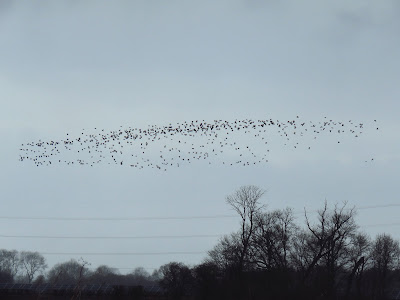An elegant wader, the underside is white and the back and chest black. The back has iridescent green and purple metallic sheen back and chest. The head is adorned with long plumes, longer in males, and bars. The wings are very distinctive, long wide and with a round tip. The bill is short and black. It feeds on insects and other soil invertebrates. It breeds on farmland and in areas of short grass or bare ground by wetlands. Male display flights in spring are spectacular, with individuals tumbling down and rising while calling. Lapwings winter in estuaries and arable farmland.
Status and distribution in Hull
Formerly an abundant and widespread breeder and wintering wader around Hull. Broughton states that "By the 1960s Lapwings were breeding not uncommonly in the pasture fields surrounding Hull, right up to the suburbs." Urbanisation as Hull suburbs expanded, and agricultural intensification, as pasture changed to arable and autumn sown crops became widespread drastically reduced the breeding population of Lapwings. Currently a handful of breeding pairs, is restricted to the remaining fields in the north-eastern corner of Hull, and possibly by Kingswood and Willerby Farm/Priory Fields area.
The wintering Lapwing population in the Hull area has further declined in the last two decades, since Richard Broughton stated (2002) "Flocks can pass over almost anywhere and virtually any farmland or patch of damp ground may attract many hundreds, if not thousands, of birds." Nowadays a wintering flock in the NE of Hull and in the fields off Willerby Carr just off Hull are the remaining wintering flocks. The eastern docks frontage to the Humber estuary also hold wintering flocks, and the Humber is of national significance for wintering Lapwing, with an average maximum annual of over 16,000 individuals.
Conservation and management
Red Listed in the UK since 2009, due to severe breeding and non-breeding population declines in the last 25 years.
More information
Broughton, R.K. 2002. Birds of the Hull area. Kingston Press. Hull, UK.
Stanbury, A., Eaton, M., Aebischer, N., Balmer, D. & Win, I. (2021) The status of our bird populations: the fifth Birds of Conservation Concern in the United Kingdom, Channel Islands and Isle of Man and second IUCN Red List assessment of extinction risk for Great Britain. British Birds 114, 723–747.


















































